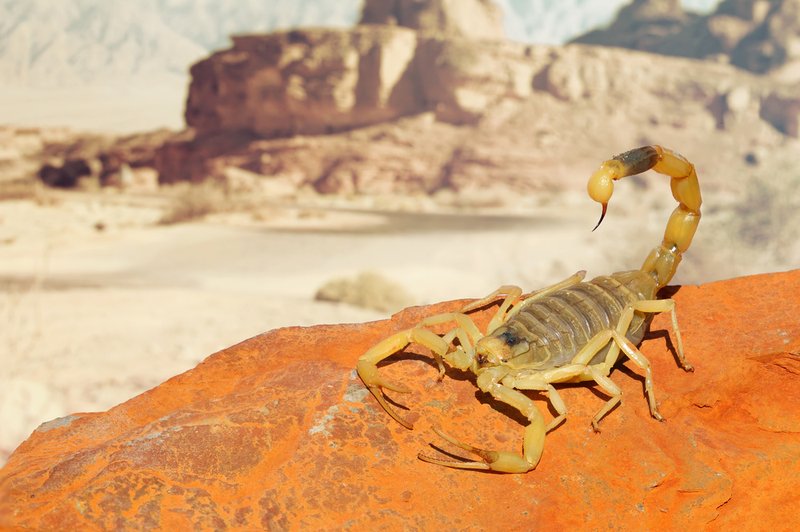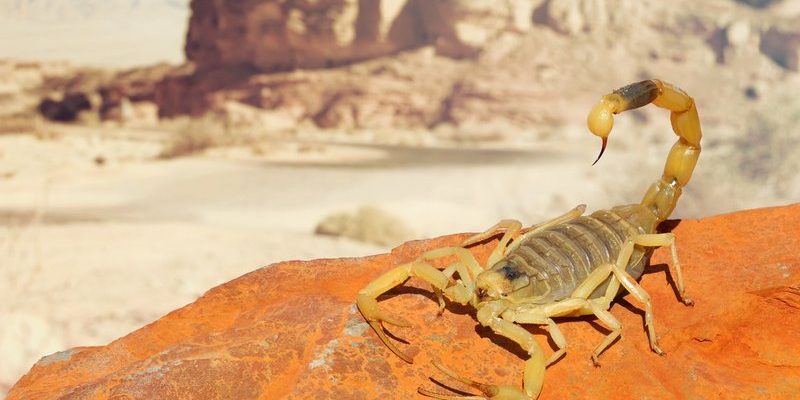
This scorpion is native to various regions, including Africa, the Middle East, and parts of Europe. While its sting is often labeled as deadly, the reality is a bit more nuanced. Like many things in life, the more you know about the Deathstalker, the less intimidating it becomes. So, if you’re curious about whether this creature is truly dangerous or just misunderstood, you’re in the right place.
What Makes the Deathstalker Scorpion Unique?
The Deathstalker scorpion (scientific name: *Leiurus quinquestriatus*) stands out not just for its striking appearance but also for its remarkable adaptations. Let’s face it: there’s something captivating about a creature that looks like it belongs in a fantasy novel. Its body can reach lengths of up to 3.5 inches, and its pale yellow coloration helps it blend into sandy environments. This helps the scorpion avoid predators while stalking its own prey, which can include insects and even small rodents.
Another fascinating aspect is its behavior. Deathstalkers are primarily nocturnal, meaning they’re most active at night. This is when they hunt and mate, relying on their keen senses to navigate the darkness. They possess the ability to glow under ultraviolet light, which can be both beautiful and a bit eerie. This glow serves multiple purposes, including communication with potential mates and warning off rivals. It’s like they have their very own party trick!
Is the Deathstalker Scorpion Poisonous?
Now, onto the big question: is the Deathstalker scorpion actually poisonous? The short answer is yes. Its venom is potent and contains a mix of neurotoxins that target the nervous system. The venom can cause painful stings, but here’s where it gets interesting: not all stings are created equal. The effects can vary greatly depending on several factors—like the age and health of the person stung and the amount of venom injected.
So, while the Deathstalker’s venom is classified as dangerous, it’s important to remember that fatalities from its sting are rare, especially if treated promptly. Most people report symptoms such as intense pain, swelling, and sometimes even fever. In severe cases, it can lead to more serious complications like difficulty breathing or heart issues. This makes it critical to seek medical attention if stung, even if symptoms seem mild at first.
Understanding the Effects of a Deathstalker Sting
When discussing the impact of a Deathstalker sting, it’s helpful to look at what actually happens in the body. The venom acts on sodium channels in nerve cells, leading to significant pain and muscle contractions. To put this in simpler terms, it’s like your body is reacting to an alarm going off in the nervous system. This reaction can cause widespread discomfort and distress.
The symptoms can range from mild localized pain to systemic reactions. Some people might experience nausea, sweating, or elevated heart rate. In more vulnerable individuals, such as children or those with underlying health issues, the effects can be more severe. If you’re wondering whether it’s worth the risk to handle a Deathstalker, the short answer is: it’s best to admire from a safe distance.
How Dangerous Is the Deathstalker Scorpion Indoors or Outdoors?
Whether you encounter a Deathstalker indoors or outdoors can change how dangerous the situation is. Outdoors, they typically stay away from human activity, preferring to lurk in sandy areas or under rocks. But if you’re hiking or exploring, stepping on one by accident could lead to a nasty sting.
Indoors, however, these scorpions can become a real nuisance. They might enter homes in search of food or shelter, especially in areas where humans live close to their natural habitats. This raises the stakes because having one of these critters in your living space can be alarming. Even if you’re not typically afraid of scorpions, knowing one is nearby can make you feel uneasy!
To keep your living area safe, it’s smart to seal cracks and holes and eliminate clutter where scorpions might hide. If you do find a Deathstalker indoors, it’s best to contact pest control instead of trying to handle it yourself.
Comparing the Deathstalker with Other Scorpions
When it comes to scorpions, the Deathstalker isn’t alone in the danger department. There are many species out there, some more venomous than others. For instance, the Black scorpion is known for its painful sting but isn’t as neurotoxic as the Deathstalker. In comparison, the Arizona bark scorpion, while also painful, has venom that’s considered less lethal.
You might be wondering what sets the Deathstalker apart. It’s not just the toxicity but also the combination of the venom’s effects, which include both pain and potential life-threatening symptoms. For someone living in a region where multiple scorpion species coexist, it’s crucial to recognize these differences. Knowledge can be a lifesaver, especially if a sting happens.
How to Treat a Deathstalker Sting
If you find yourself on the receiving end of a Deathstalker sting, it’s important to stay calm. Here’s what you should do:
1. Clean the Area: Wash the sting site gently with soap and water to prevent infection.
2. Apply a Cold Compress: This can help minimize swelling and ease the pain.
3. Pain Relief: Over-the-counter pain relievers like ibuprofen or acetaminophen can help manage discomfort.
4. Seek Medical Attention: If symptoms worsen or if you’re in a high-risk group (like children or individuals with health issues), don’t hesitate to see a doctor.
By following these steps, you can manage the symptoms effectively and reduce the potential for complications.
Final Thoughts on the Deathstalker Scorpion
So, is the Deathstalker scorpion poisonous or dangerous? Yes, it is indeed poisonous, and while its venom can be serious, it’s not an automatic death sentence. Understanding this creature’s behavior, habitat, and treatment options can lessen the fear surrounding it. While it’s best to keep a respectful distance, there’s also beauty in understanding these remarkable animals. They play a role in their ecosystems, and learning about them can help us coexist peacefully.
Next time you hear about a Deathstalker scorpion, try to remember that they’re much more than just a poisonous critter—they’re a fascinating example of nature’s complexity. So, whether you’re hiking in the desert or just curious about wildlife, keep your eyes peeled and your mind open!

